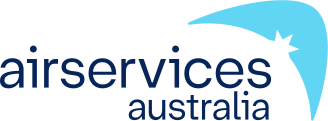When is each flight path used?
Air traffic control manage the traffic to each runway at an airport using a range of operations which can include clearing aircraft to use published flight paths, issuing visual approaches or vectoring for separation and sequencing. As the runway in use changes, the types of operations in use will also change, and so different suburbs and areas are affected by aircraft movements.
Flight paths do not operate in isolation. They are part of an interconnected network. Flight paths need to accommodate aircraft operating constraints, provide terrain clearance and fit into the overall airspace design.
Arrivals
Arriving aircraft need to align with the runway prior to touching down. Depending on the arrival or approach procedure being flown, aircraft may align with the runway from a few kilometres to beyond twenty kilometres from touchdown.
When the sky is clear and there is no low cloud along the approach path, aircraft may join the runway alignment closer to the airport. If there is low cloud or other weather impeding visual conditions, aircraft will align with the runway further from touchdown and will fly the published flight path.
A further consideration is the density of traffic. If there are frequent arrivals to both runways, aircraft will align with the runway further from touchdown in accordance with established parallel runway flight procedures.
Departures
Departing aircraft can turn once they are airborne and stabilised. Both turbo-prop and jet aircraft operate at Brisbane Airport. These aircraft types have different operational capabilities and are separated accordingly.
Departures from the new runway plan to fly to ports to the north or the west, and are required to turn. The departure procedure for turbo-prop aircraft sees these aircraft types turn at an altitude of 600 feet but not before the runway end. This is necessary to move the aircraft onto the planned route and also to move the aircraft out of the path of the faster moving jet aircraft.
Jet aircraft maintain the runway heading on departure. They do so in order to gain altitude so that when they do turn, they are higher than the propeller aircraft departures and can safely pass above them.
If turbo-prop and jet aircraft departed on the same flight path there would be more time needed between movements due to differences in the operational capabilities. This would impact the efficient operation of the airport by reducing the throughput of aircraft.
Alternative Flight Paths
The Brisbane new parallel runway operations design has certain modes of operation and generally aircraft departing to or arriving from the west or the north will land and depart on the new runway, while aircraft departing to or arriving from the south or east will land and depart on the legacy runway.
However to maximise the safety and efficiency of operations, the airspace design also includes flight paths that track from all directions to both runways.
This provides air traffic control with the option to use these flight paths to effectively manage air traffic in high workload periods, including when there is bad weather, runway maintenance or an emergency, or in periods of air traffic delays, including holding.
Learn more about how the runways are selected on our Brisbane Airport Runways page.


